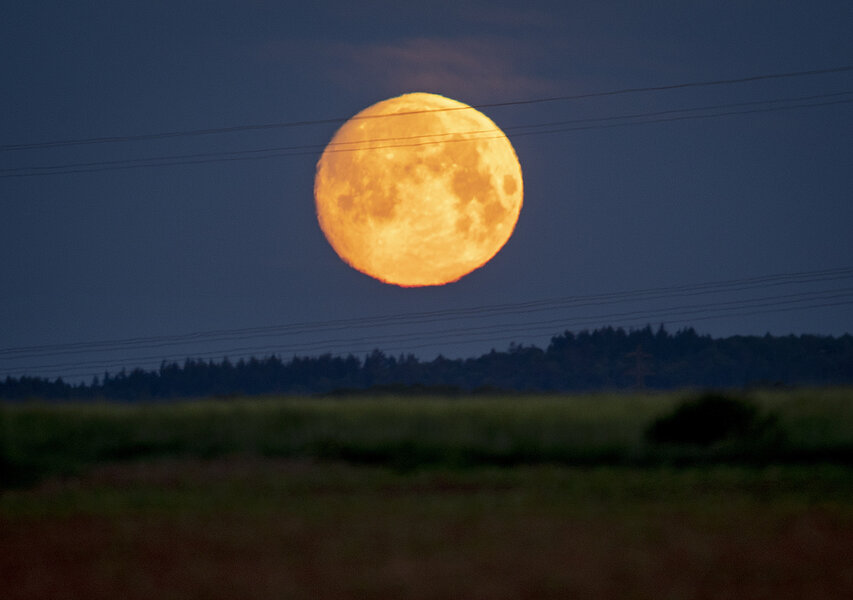Why stargazing is looking up
Loading...
Just when the world is feeling down, stargazing is looking up. It’s a simple activity for those stuck at home with a view of the heavens. All it takes is an inexpensive telescope, a pair of binoculars, or just the naked eye.
“The moon is still there. The stars are still there,” a British stargazer told CBS News.
Centuries ago, humans paid more attention to the night sky, especially to the moon as it shrank each month to a sliver of itself and then regrew to its glowing roundness. Stars moved in reliable patterns, providing seasonal and travel guides. Planets were a mystery unto themselves.
Today, many people are taking comfort in searching the celestial scene. A few months of sheltering in place, after all, is nothing compared with the timelessness and immensity of the universe. Looking up, people see that.
Yet there may be another reason for the increase in backyard astronomy. In April, the Hubble Space Telescope marked 30 years of sending back images from the far reaches of the universe. It has made numerous discoveries, such as revealing that the universe is roughly 13.8 billion years old.
In a patch of space where the human eye sees nothing, Hubble has found thousands of galaxies, just part of 1.4 million such observations so far.
Hubble’s success serves as another guiding star for those in pandemic lockdown. Problems can be overcome. When it first began transmitting images in 1990, scientists discovered Hubble had a flaw in its large mirror. Its distorted photos were nearly useless. But scientists and technicians didn’t give up. In 1993 astronauts spent five days in spacesuits making crucial repairs. The result: spectacularly clear views ever since.
More progress in space is scheduled for late May, when American astronauts Robert Behnken and Douglas Hurley travel to the International Space Station. They’ll be the first astronauts sent into space from American soil since 2011. After the end of the space shuttle program, the United States was forced to buy seats for its astronauts on Soyuz launches from Russia.
Domestic rockets are a vital step if the U.S. wants to return to the moon by 2024, the government’s stated goal. And beyond that, Mars awaits.
But the May launch has taken on greater meaning.
“It’s important that this agency do this now, because our country – and in fact the whole world – has been shaken by this coronavirus pandemic,” NASA Administrator Jim Bridenstine said at a recent news conference. “We need to give people hope.”
The astronauts will be test-driving a new type of spacecraft, the fifth one in a line of U.S. spacecraft – Mercury, Gemini, Apollo, and then the space shuttle.
More than six decades of space exploration has produced practical progress. Where would the world be without wireless communication and weather satellites? Imagine driving in unfamiliar areas without a GPS signal. Yet these feats have not diminished the deep need to explore. Thought marvels at the universe’s beauty and its mysteries. Curiosity demands to unlock them.
On Earth, it might seem like a time to hunker down inside. But many are choosing to look up – and be renewed.







